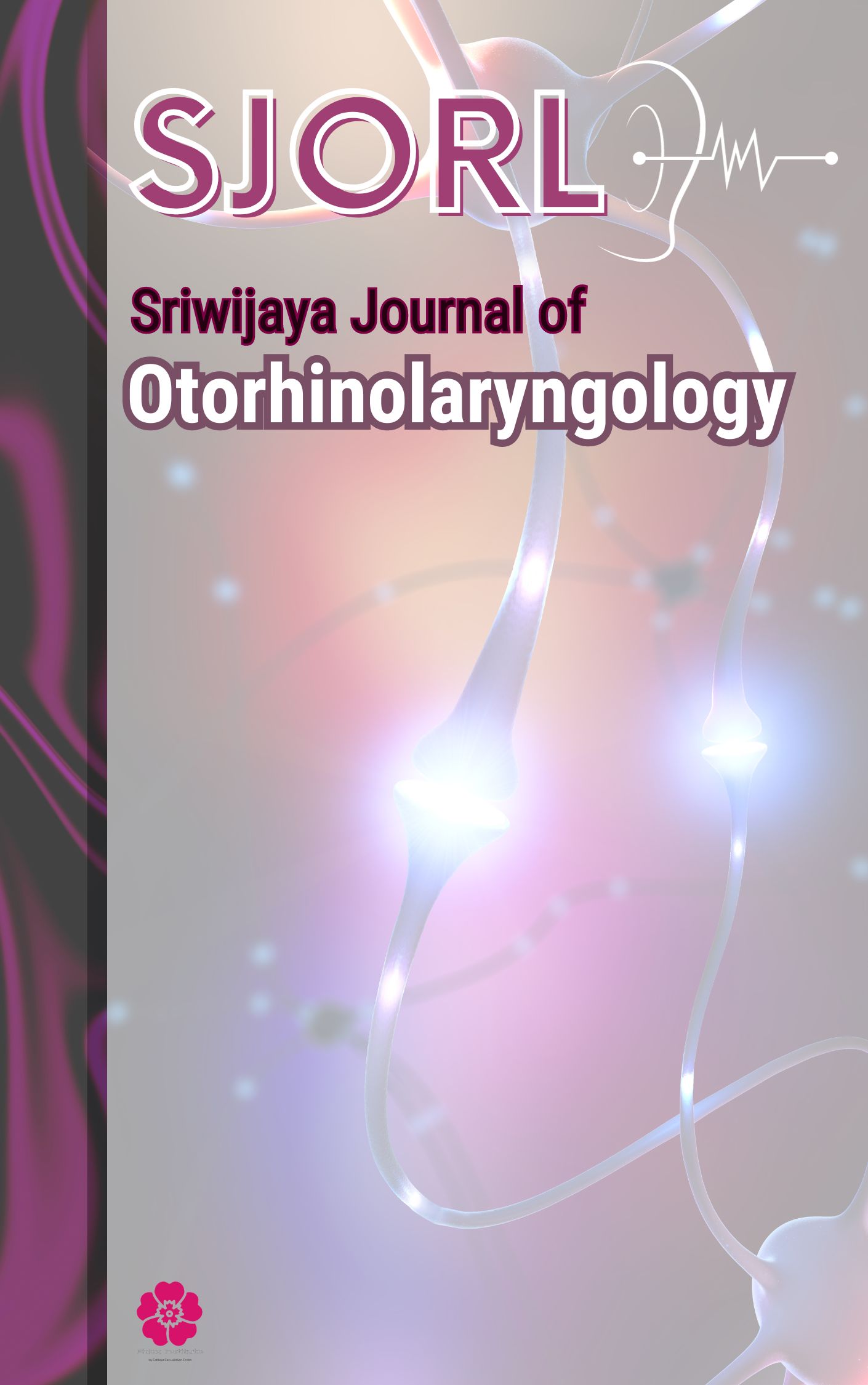Main Article Content
Abstract
Introduction: Professional singers heavily rely on their vocal capabilities, necessitating a thorough understanding of the interplay between voice quality and pharyngeal function to maintain vocal health and prevent disorders. This study aimed to evaluate these aspects in professional singers in Indonesia.
Methods: This cross-sectional study involved 30 professional singers (15 males, 15 females) aged 20-40 years from Jakarta, Indonesia. Voice quality was assessed using the GRBAS scale (Grade, Roughness, Breathiness, Asthenia, Strain) and acoustic analysis (fundamental frequency, jitter, shimmer, harmonics-to-noise ratio). Pharyngeal function was evaluated via videofluoroscopy, measuring pharyngeal constriction ratio (PCR) during swallowing and vowel phonation.
Results: Most singers exhibited normal voice quality per the GRBAS scale. Acoustic analysis revealed significantly higher fundamental frequency in females (p<0.05). Jitter, shimmer, and harmonics-to-noise ratio were within the normal range for both genders. PCR values were significantly higher during vowel phonation than swallowing in both genders (p<0.05), indicating increased pharyngeal constriction during singing.
Conclusion: Professional singers in this study demonstrated good voice quality and adapted pharyngeal function to meet singing demands. Higher PCR during phonation suggests specific pharyngeal muscle activation patterns for vocal production. Further research is needed to explore the long-term effects of singing on pharyngeal function and identify potential risk factors for voice disorders in Indonesian singers.
Keywords
Article Details
Sriwijaya Journal of Otorhinolaryngology (SJORL) allow the author(s) to hold the copyright without restrictions and allow the author(s) to retain publishing rights without restrictions, also the owner of the commercial rights to the article is the author.

